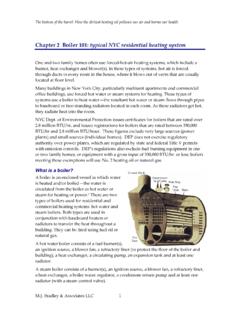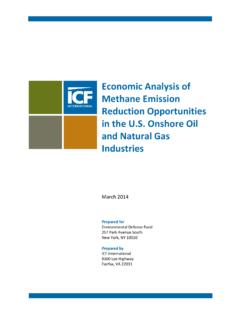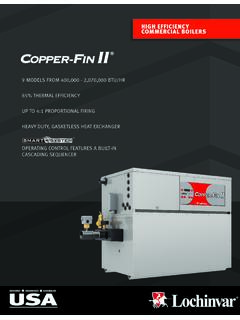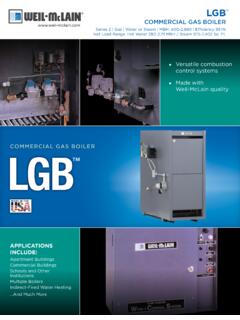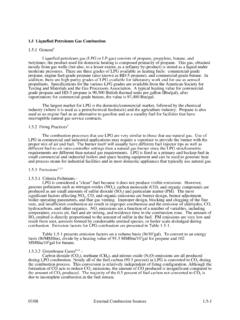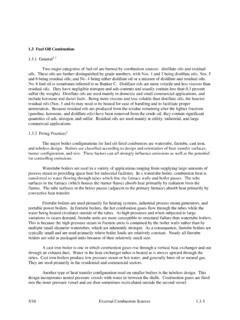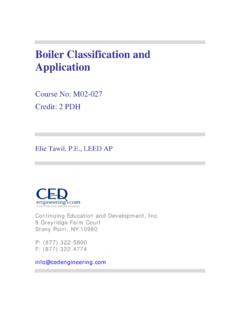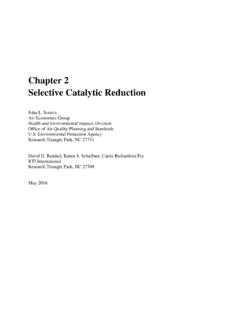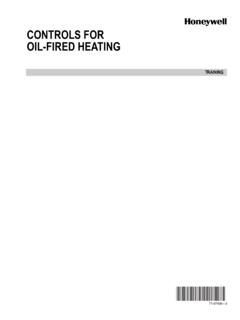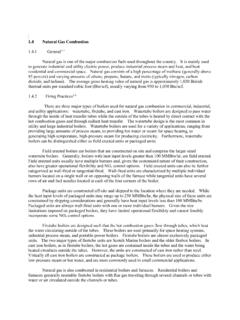Transcription of Chapter 2 Boiler 101: typical NYC residential heating system
1 The bottom of the barrel: How the dirtiest heating oil pollutes our air and harms our health Bradley & Associates LLC 1 Chapter 2 Boiler 101: typical NYC residential heating system One and two family homes often use forced-hot-air heating systems, which include a burner, heat exchanger and blower(s). In these types of systems, hot air is forced through ducts to every room in the house, where it blows out of vents that are usually located at floor level. Many buildings in New York City, particularly multiunit apartments and commercial office buildings, use forced hot water or steam systems for heating .
2 These types of systems use a Boiler to heat water the resultant hot water or steam flows through pipes to baseboard or free-standing radiators located in each room. As these radiators get hot, they radiate heat into the room. NYC Dept. of Environmental Protection issues certificates for boilers that are rated over million BTU/hr, and issues registrations for boilers that are rated between 350,000 BTU/hr and million BTU/hour. These figures exclude very large sources (power plants) and small sources (individual homes).
3 DEP does not exercise regulatory authority over power plants, which are regulated by state and federal Title V permits with emission controls. DEP s regulations also exclude fuel burning equipment in one or two family homes, or equipment with a gross input of 350,000 BTU/hr. or less; boilers meeting these exemptions will use No. 2 heating oil or natural gas. What is a Boiler ? A Boiler is an enclosed vessel in which water is heated and/or boiled the water is circulated from the Boiler as hot water or steam for heating or There are two types of boilers used for residential and commercial heating systems: hot water and steam boilers.
4 Both types are used in conjunction with baseboard heaters or radiators to transfer the heat throughout a building. They can be fired using fuel oil or natural gas. A hot water Boiler consists of a fuel burner(s), an ignition source, a blower fan, a refractory liner (to protect the floor of the Boiler and building), a heat exchanger, a circulating pump, an expansion tank and at least one radiator. A steam Boiler consists of a burner(s), an ignition source, a blower fan, a refractory liner, a heat exchanger, a Boiler water regulator, a condensate return pump and at least one radiator (with a steam control valve).
5 The bottom of the barrel: How the dirtiest heating oil pollutes our air and harms our health Bradley & Associates LLC 2 How a Boiler works A heating system is controlled by a thermostat, regardless of the fuel burned or whether it produces hot water or steam. The thermostat measures the temperature within the room(s) to be heated. If the temperature falls below a preset limit, the thermostat signals the heating system to provide additional heat2. In a hot water system , the water in the Boiler is kept at approximately 180 F at all times during the heating season.
6 When the room thermostat calls for more heat, the circulating pump turns on, circulating the hot Boiler water to the radiators in the room(s). As heat is removed from the water by the radiators, its temperature falls and the burner turns on to bring it back up to 180 F in the Boiler . In a hot water system , the burner cycles on and off to keep the water in the Boiler at the right temperature, while the circulating pump cycles on and off to provide heat to the rooms. In a steam system , the Boiler water is also kept at approximately 180 F most of the time below the temperature required to produce steam.
7 When the room thermostat signals that more heat is needed, the burner turns on, increasing the temperature of the Boiler water above 212 F and producing steam. This steam rises throughout the building to the room radiators. A steam system does not have a circulating pump and the burner can cycle on and off either to keep the idling Boiler at approximately 180 F, or to increase Boiler temperature to produce steam needed to heat the rooms. Hot water Boiler If the temperature of the Boiler water falls below 180 F, a hot water Boiler s controller will initiate combustion.
8 In an oil-burning Boiler this is accomplished by a fuel pump drawing the liquid fuel from the storage tank through a filter and pumping it into the burner assembly located in the combustion chamber. residential hot water Boiler gas fired Source: Firstech Services Oil- fired burner Source: American Burner Corp. The bottom of the barrel: How the dirtiest heating oil pollutes our air and harms our health Bradley & Associates LLC 3 Large natural gas burner Source: Arco Fluid Large residential steam Boiler oil fired Source: Firstech Services The burner assembly atomizes the fuel into a fine mist, which mixes with forced air from a blower fan, while the ignition system creates a spark.
9 This spark ignites the fuel-air mixture (this is called light off). Once lit, the flame is stable but the ignition system continues to spark to ensure continuous combustion. This flame is directed, using refractory bricks, toward the heat exchanger and swirl inducers. After flowing through the heat exchanger, the combustion exhaust gases are directed to an exhaust stack (chimney), which typically exits the building at roof level. The heat exchanger consists of a series of connected metal tubes that hold the water to be heated.
10 It also includes a circulating pump that moves the water through the system . As the flame and exhaust gases pass over the tubes of the heat exchanger, the water inside absorbs heat. The hot water is pumped to the baseboard heaters/radiators to release its stored heat before returning to the heat exchanger to repeat the process. This is called the Boiler water loop, since it is a circular system . For a natural gas- fired hot water Boiler , almost all of the components are the same except for the equipment used to supply fuel to the burner (the gas train).







